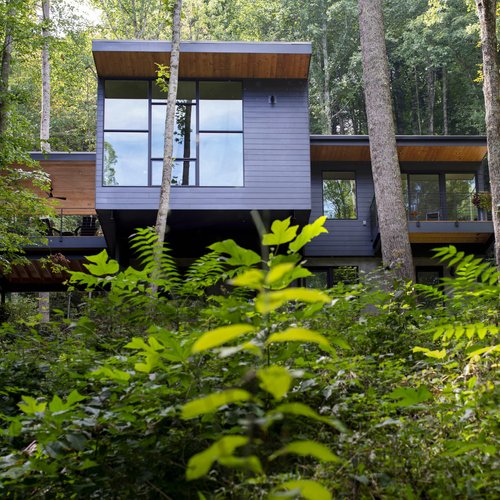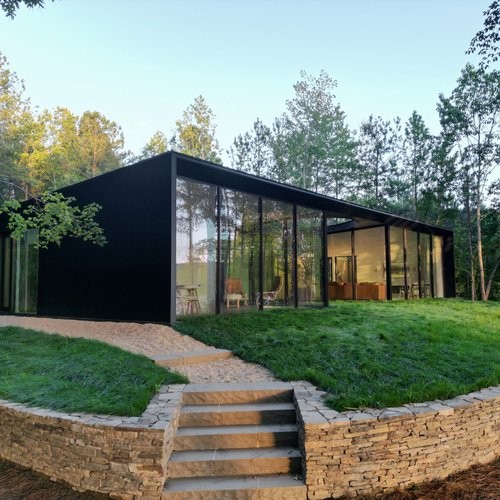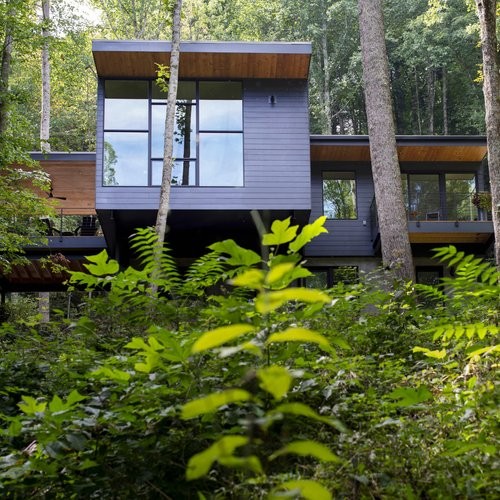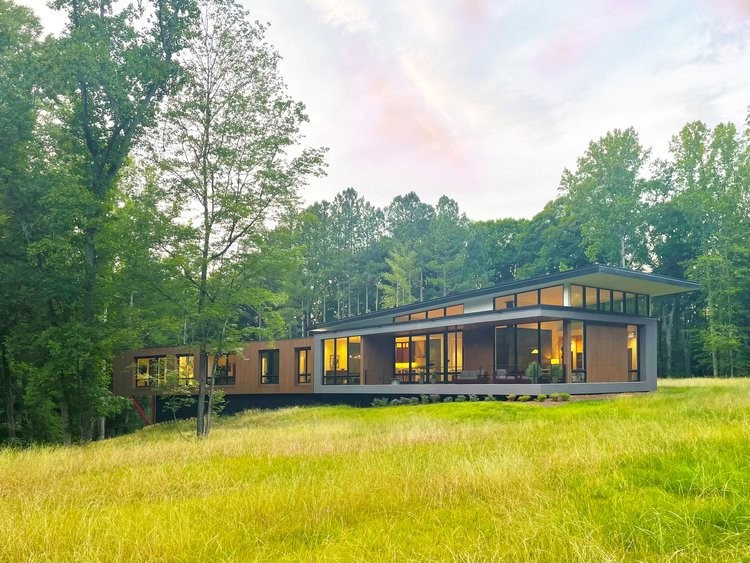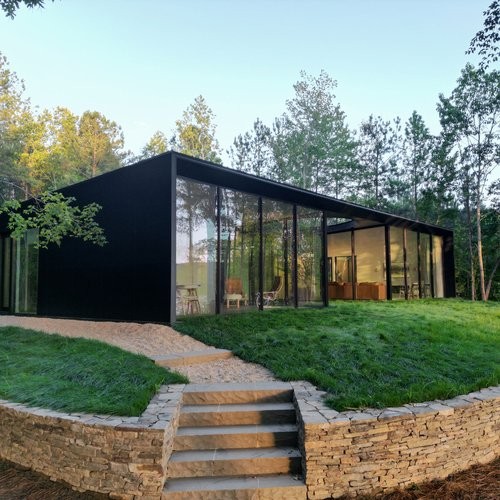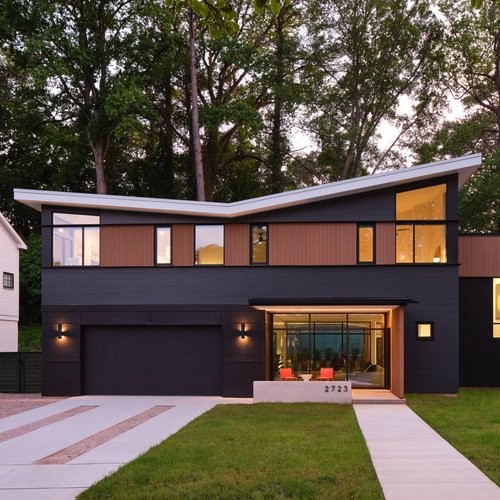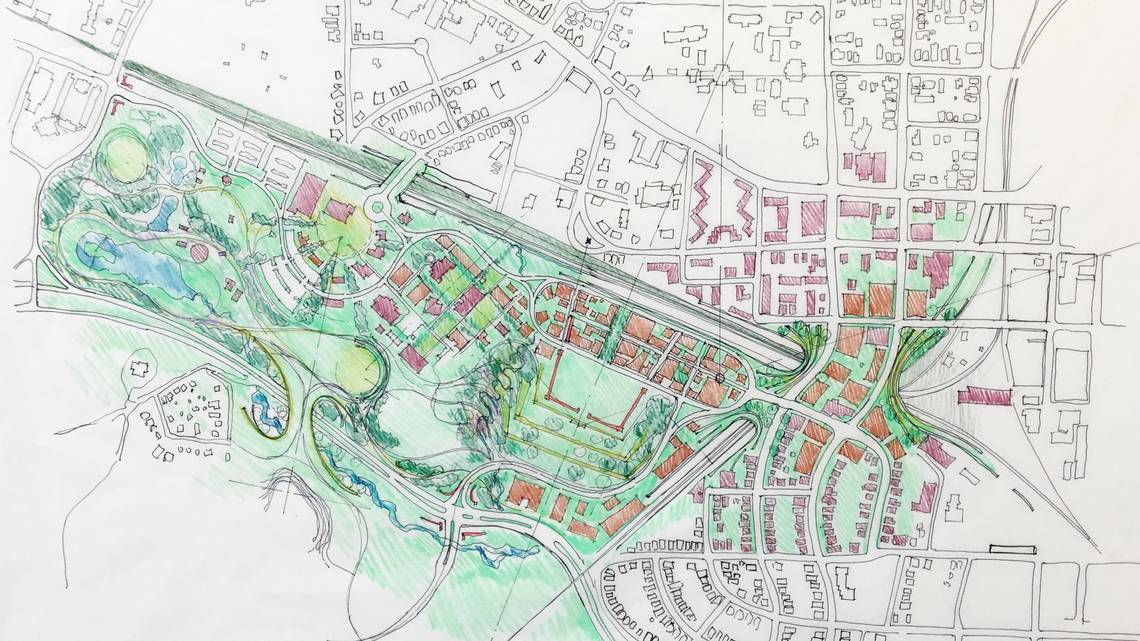The George Matsumoto Prize is North Carolina’s highest honor exclusively for Modernist residential architecture. It was created by NCModernist in 2012 to honor George Matsumoto, one of the founding faculty members of NC State’s College of Design, and an architect who created some of North Carolina’s most well-loved Modernist houses. Each year the competition receives between 12 and 20 entries from across North Carolina. This marks the 14th year for the prize, and A+A is pleased to feature the 2025 winners, along with an interview with George Smart, executive director of NC Modernist:
Could you give us some background on the architect for whom this prize is named?
George Matsumoto grew up in San Francisco in Nihonmachi (Japantown), attending Lowell High School and taking Japanese classes at Kinmon Gakuen. He pursued a degree in architecture from the University of California at Berkeley in architecture. In his final semester, he and his family were sent to an internment camp in Poston AZ as part of the forcible relocation of Japanese Americans during World War II. Matsumoto completed his undergraduate degree at Washington University in St Louis MO in 1943. With a scholarship to attend Cranbrook Academy of Art in Michigan, Matsumoto studied under Eliel Saarinen and graduated in 1945 with honors. He worked for Skidmore, Owings & Merrill in Chicago and in 1946 he joined Saarinen and Swanson.
After a year of private practice in Kansas City with Runnells, Clark, Waugh and Matsumoto, he became an instructor at the University of Oklahoma. In 1948, Henry Kamphoefner, then head of Oklahoma’s architecture program, was appointed first dean of the School of Design at North Carolina State University. Matsumoto, along with several other faculty and students, left Oklahoma with Kamphoefner to start what became an epicenter for Modernist architecture education in the US.
During his tenure at the NCSU School of Design between 1948 and 1961, Matsumoto won more than thirty awards for residential work and designed a Modernist addition to the school. In 1961 he returned to California with his wife Kimi and their children, to teach at Berkeley until 1967, followed by a successful private practice.
The intent of this competition?
The Matsumoto Prize encourages architects, designers, and prospective clients to continue the Modernist movement in houses so important to North Carolina’s design heritage. The Prize meaningfully and powerfully engages the public with the architecture they love and showcases exceptional Modernist architects and designers in North Carolina.
How many entries in the competition this year? And from where?
There were 18 entries, from Raleigh, Southern Pines, Chapel Hill, Asheville, Swannanoa, Sylva, Wilmington, Roaring Gap, Asheville, Boone, Lewisville, Hurdle Mills, Stanley, Oak Island and Henrico.
Who were the judges for the jury voting?
They included Dominyka Voelkle/BIG, Lissa So/Marvel, Ed Niles, Charles McAfee, Bart Prince, James Biber, Julia Gamolina/Madame Architect.
One entry made it to both the panel’s finals and the popular vote. What makes that one special?
There is the classic simplicity of the Modernist design, coupled with a desirable lakeside location. Both got many nods from the jury and the public.
What did all the entries have in common?
For the most part, these houses are smaller than typical new single-family homes, taking advantage of the architects’ skills in structure, space and scale to create relaxing, beautiful spaces that live large in fewer square feet.
What is the impact of winning first, second or third place on the architecture firms who won?
Because of NCModernist’s national newsletter, architects get wide publicity not just for winning but for submitting. The rising tide of promotion floats all participating firms, encouraging potential clients to pursue their dream homes with these talented architects.
For more, go here.

